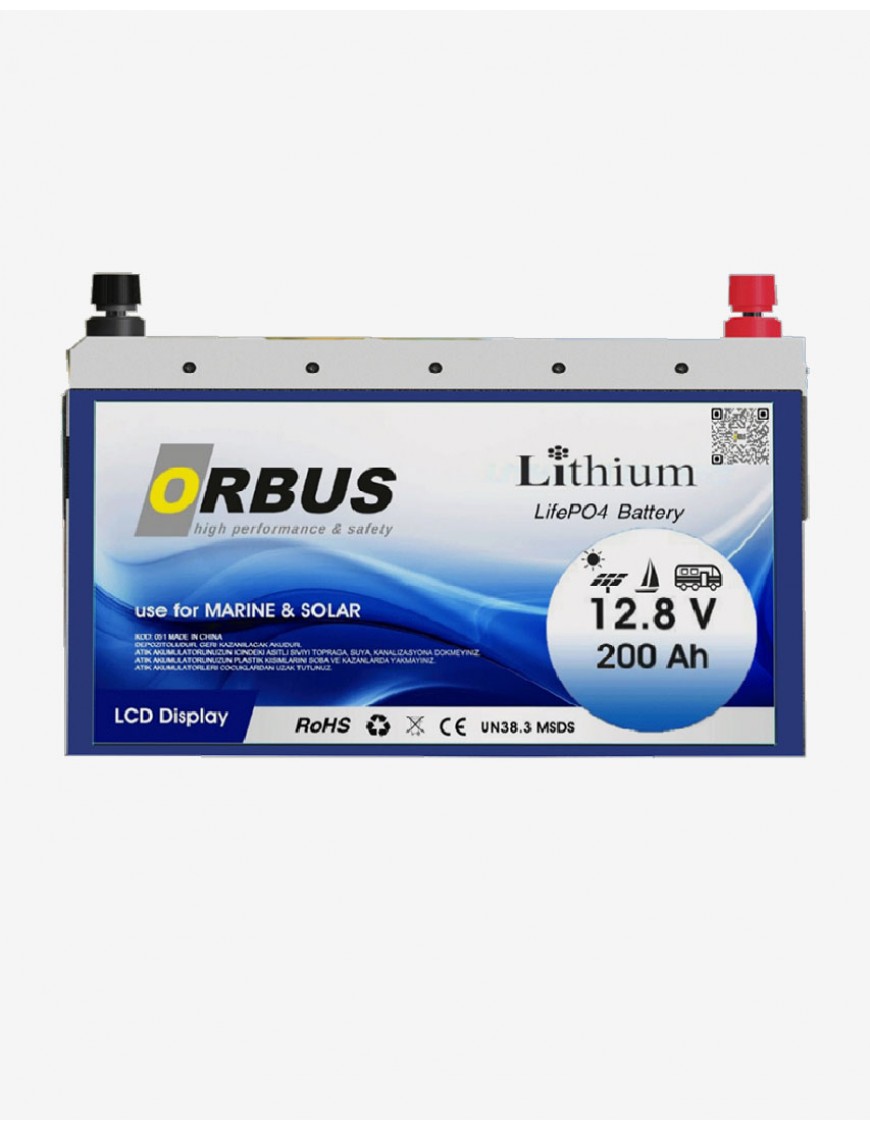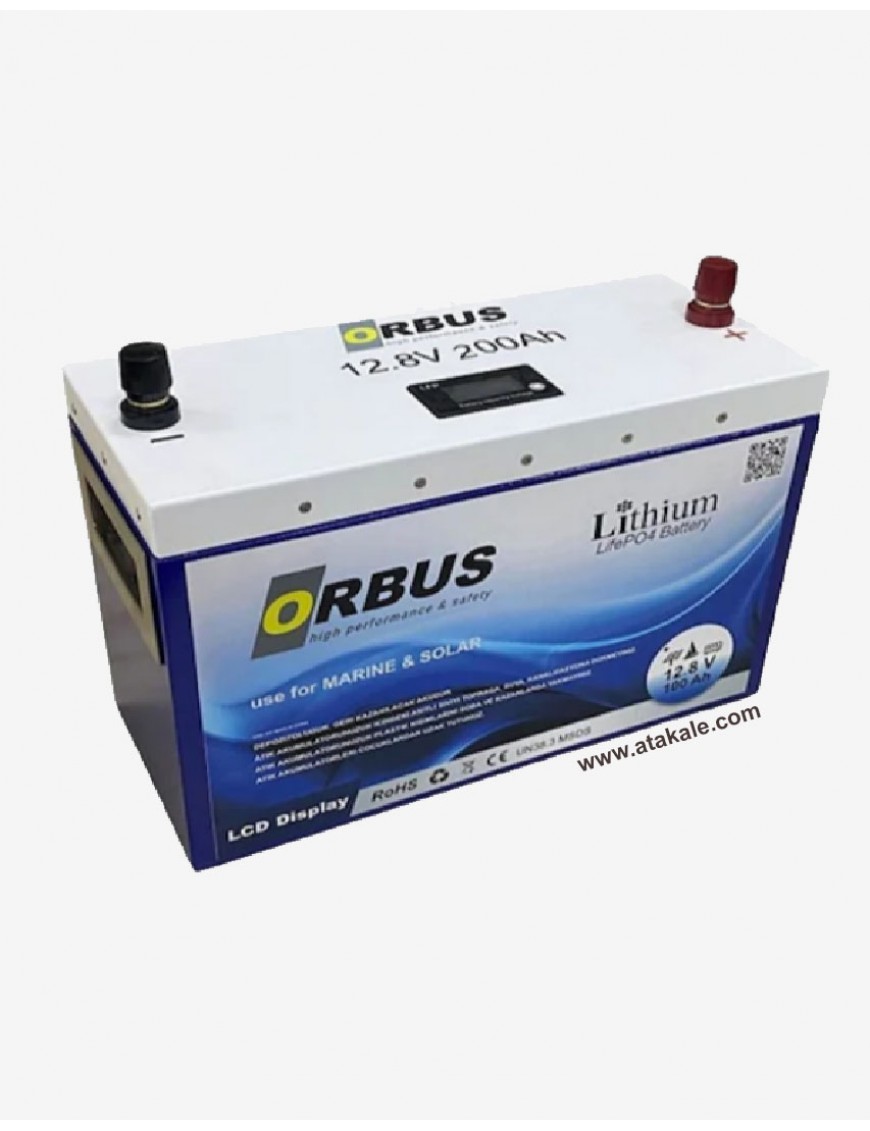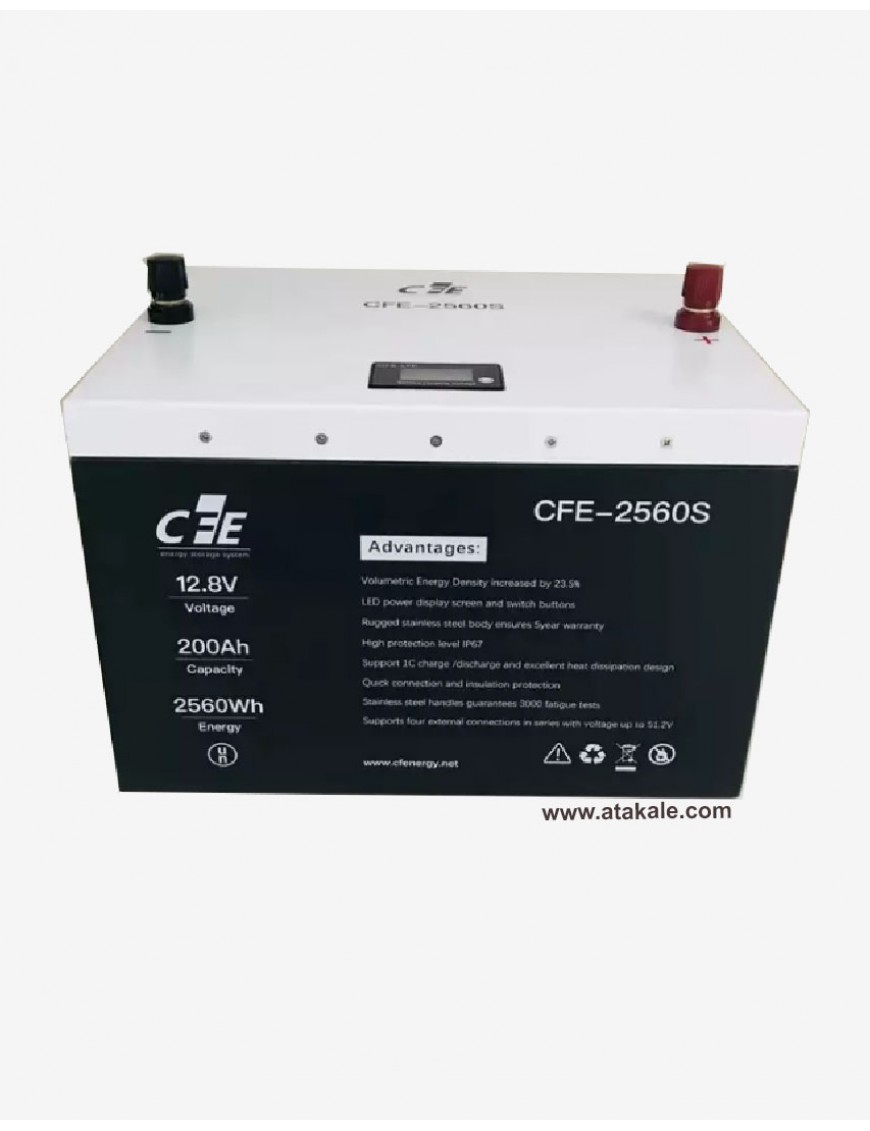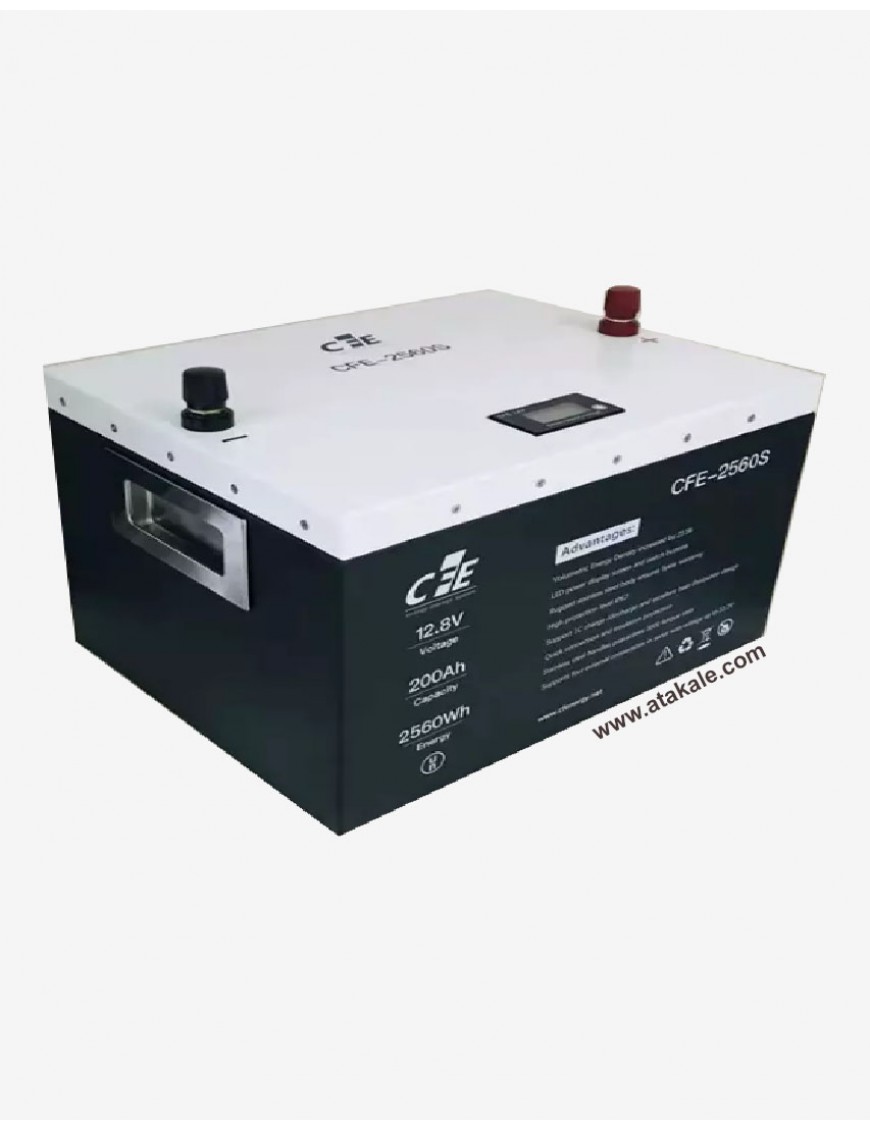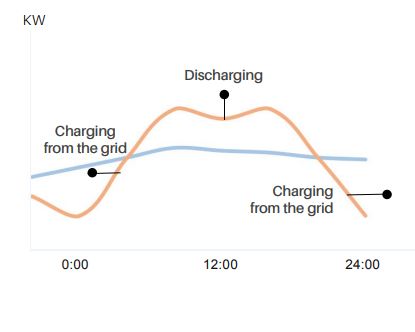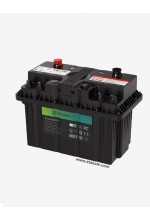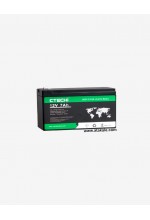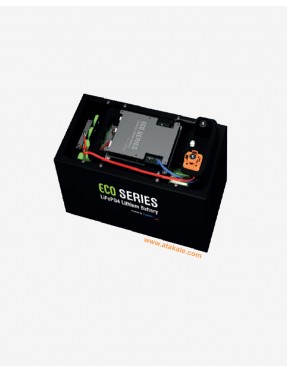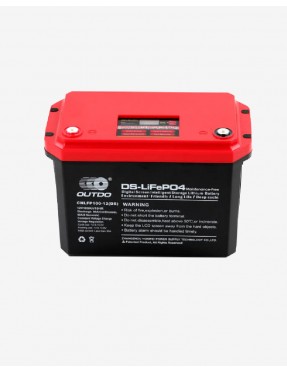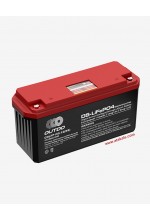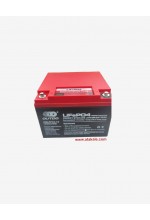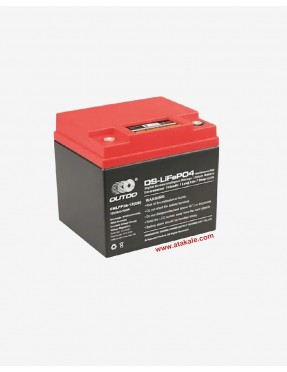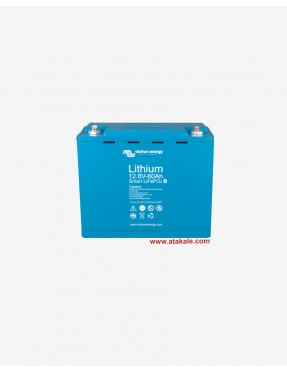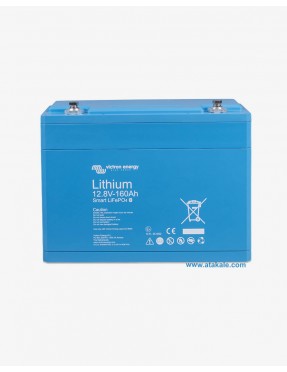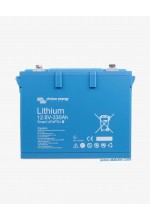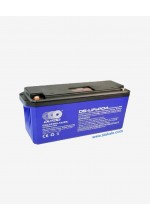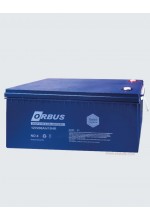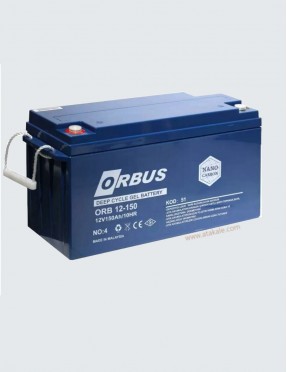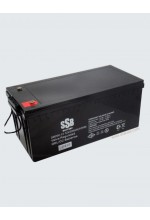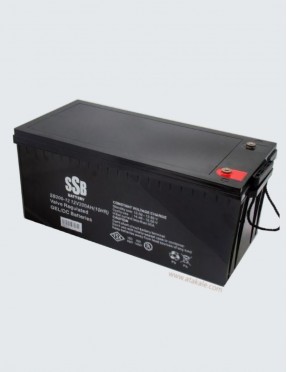Kurulum Yeri
Kurulum konumunun aşağıdaki koşulları karşıladığından emin olun:
1) Alan tamamen su geçirmezdir
2) Zemin düz ve düzdür.
3) Yanıcı veya patlayıcı madde yoktur.
4) Ortam sıcaklığı 0°C ila 50°C aralığındadır.
5) Sıcaklık ve nem sabit bir seviyede tutulur.
6) Alanda minimum toz ve kir var.
7) Isı kaynağına olan mesafe 2 metreden fazladır.
8) İnverterin hava çıkışına olan mesafe 0,5 metreden fazladır.
9) Kurulum alanları doğrudan güneş ışığından korunmalıdır.
10) Akü modülü için zorunlu havalandırma gerekliliği yoktur, ancak lütfen kapalı alanda kurulumdan kaçının. Havalandırma aşağıdakilerden kaçınacaktır: yüksek tuzluluk, nem veya sıcaklık topraklama
Topraklama kabloları 10AWG veya üzeri sarı-yeşil kablolar olmalıdır. Bağlantıdan sonra, akü topraklama noktasından odanın veya kurulu yerin Toprak bağlantı noktasına olan direnç 0,1Ω'den küçük olmalıdır.
1) modülün yüzeyi ile rafın yüzeyi arasında doğrudan temas eden metal olmamalıdır tam izolasyon sağlanmalıdır. Boyalı raf kullanılıyorsa, ilgili yer boyayı kaldıracaktır.
2) modüllerin topraklama noktasına bir topraklama kablosu bağlayın ve kabini bu topraklama barasına bağlayınınız
1) Aküleri kabine koyun
2) 4 adet vidayı sürün
3) Akü modülleri arasındaki kabloları bağlayın
4) Kabloları invertöre bağlayın
Sorun giderme.
dayalı sorun belirleme
1) Akünün açılıp açılmayacağı
2) Pil açıksa, kırmızı ışığın kapalı olduğunu, yanıp söndüğünü veya yandığını kontrol edin.
3) Kırmızı ışık yanmıyorsa, pilin şarj edilip edilemeyeceğini kontrol edin. Olası koşullar: 1) Pil açılamıyor, AÇIK konuma getirin ve kırmızı SW'ye basın, ışıkların hepsi yanmıyor veya yanıp sönmüyor.
a) Kapasite çok düşük veya modül aşırı boşalmış. çözüm: 48-53,5V voltaj sağlamak için bir şarj veya invertör kullanın. Pil başlayabiliyorsa, modülü şarj etmeye devam edin ve pil günlüğünü kontrol etmek için izleme araçlarını kullanın.
Akü terminal voltajı ≤45Vdc ise, SOH'den etkilenmemek için modülü yavaşça şarj etmek için lütfen ≤0.05C kullanın. Akü terminal voltajı >45Vdc ise, şarj etmek için ≤0.5C kullanabilir.
Pil başlayamıyorsa, pili kapatın ve onarın.
2) Pil açılabilir, ancak kırmızı ışık yanıyor ve şarj olmuyor veya deşarj olmuyor. Kırmızı ışık yanıyorsa, sistem anormaldir, lütfen değerleri aşağıdaki gibi kontrol edin.
b) Sıcaklık: 60°C'nin üzerinde veya -10°C'nin altında pil çalışmayabilir. Çözüm: Pili 0°C ile 50°C arasındaki normal çalışma sıcaklığı aralığına taşımak için
c) Akım: Akım 90A'i geçerse pil koruması devreye girer. Çözüm: Akımın çok büyük olup olmadığını kontrol edin, varsa güç kaynağı tarafındaki ayarları değiştirin.
32
d) Yüksek Voltaj: Şarj voltajı 54V'un üzerinde ise akü koruması devreye girer. Çözüm: Güç kaynağı tarafındaki ayarları değiştirmek için voltajın çok yüksek olup olmadığını kontrol edin. Ve modülü boşaltın.
e) Düşük Voltaj: Akü 44,5V veya altına düştüğünde akü koruması devreye girer. Çözüm: Kırmızı ışık sönene kadar pili şarj edin.
f) Hücre voltajı yüksek. Modül voltajı 54V'tan düşük, SOC LED'i tamamen yanmıyor. Deşarj olduğunda modül koruması kaybolur. Çözüm: Modülü 53-54V ile şarj edin veya sistem döngüsünü koruyun. BMS, döngü sırasında hücreyi dengeleyebilir.
3) Kırmızı LED açıkken şarj ve deşarj yapılamıyor. Sıcaklık 0
50 derecedir. Şarj etmek için şarj cihazını kullanın, mümkün değil. Boşaltmak için yük kullanın, mümkün değil.
g) Kalıcı koruma altındadır. Tek hücre voltajı 4.2'den yüksek veya 1.5'ten düşük veya sıcaklık 80 dereceden yüksek. Çözüm: Modülü kapatın ve onarım için yerel distribütörünüzle iletişime geçin.
4) Kırmızı LED yanmadan şarj ve deşarj yapılamıyor. Sıcaklık 0
50 derecedir. Şarj etmek için şarj cihazını kullanın, mümkün değil. Boşaltmak için yük kullanın, mümkün değil.
h) Sigorta bozuk. Çözüm: Modülü kapatın ve onarım için yerel distribütörünüzle iletişime geçin.
LifePo4 Bakımı
• Müşteri aküyü teslim aldığında, öncelikle temel işlevi kontrol etmeli ve nakliye sırasında herhangi bir hasar oluşmadığından emin olmalıdır. Lütfen lifepo4 voltajını, şarj işlevini, deşarj işlevini ve görüntüleme işlevini test edin; Herhangi bir anormallik varsa lütfen kurulumu durdurun ve hemen bize bildirin. akünün kurulum kılavuzuna göre taktıktan sonra, ilk kez kullanmadan önce aküyü tamamen şarj edin. akü , üç ila beş kez tam olarak şarj edilip boşaldığında maksimum kapasitesine ulaşacaktır.
• Ömürlerini uzatmak için aküleri kapasiteleri düşükken şarj edin. Bu süre içinde piller şarj edilmezse ve uzun süre eksik kalırsa akü ömrü olumsuz etkilenecektir. Bu aküler uzun süre kullanılmayacaksa, yarı kapasitede tutun ve aküyü iki ayda bir, her seferinde bir saat yüzer şarj edin.
• Batarya kuru, temiz ve iyi havalandırılan bir alana kurulmalı, bu arada tutuşma kaynaklarından ve yanıcı malzemelerin yakınından kaçınılmalıdır. Şarj sırasında yükün bağlantısını kestiğinizden (yani elektrikli ekipmanı kapattığınızdan) emin olun.
• Pilin çalışma sıcaklığı 41–104°F'dir. (Optimum çalışma sıcaklığı 59–95°F'dir.) Bu sıcaklık aralığının dışında pilin performansı değişebilir. Bu şartlar altında kapasitenin veya ekipmanın çalışma süresinin değişmesi normaldir.
• Akü kutusunu organik çözücülerle temizlemekten kaçının.
• Bir kaza olursa, yangını söndürmek için karbondioksit kullanmayın; bunun yerine, söndürmek için karbon tetraklorür veya kum kullanın.
• Lifepo4 bir sarf malzemesidir ve kullanım ömrü sınırlıdır. Lütfen pil kapasitesi nominal kapasitenin %50'sinden düşük olduğunda aküyü değiştirin.
LifePo4 Akülerin paralel olarak şarj edilme voltajı
LiFePO4 aküler paralel olarak bağlarken, hizmete almadan önce lütfen her bir pilin 0.1V aralığında olduğundan emin olun, Bu, aküler arasındaki dengesizlik olasılığını en aza indirecektir. 12V LiFePO4 akü şarj ediyorsanız, şarj voltajı 14V – 14,2V arasında olmalıdır. 24V aküleri paralel olarak şarj ederken, şarj voltajı 28V – 28.4V olmalıdır. 36V lityum akü paralel olarak şarj etmek için 42V – 42,6V voltaj gerekir. Son olarak, 48V LiFePO4 aküleri şarj etmek için 56V – 56.8V voltaj parametreleri gerekir. Aşağıda, her sistem voltajı için voltaj gereksinimlerini gösteren bir özet içeren bir tablo bulunmaktadır.
Sistem Gerilimi ........Şarj Voltajı
12V.......................14V – 14.2V
24V....................... 28V – 28,4V
36V.......................42V – 42.6V
48V.......................56V – 56.8V
Voltaj parametreleri hem CC hem de CC-CV şarj profilleri için geçerlidir. Şarj cihazınızın voltajı tabloda listelenenlerden daha düşükse, akünüze zarar vermez, ancak yetersiz şarj olur ve akünün tam nominal kapasitesini sağlamaz. Şarj cihazınızın voltajları yukarıdaki tablolarda listelenenlerden daha yüksekse, BMS akünün bağlantısını kesebilir ve yeniden bağlanmak için yükü kaldırmanız gerekebilir. Bu rahatsızlıktan kaçınmak için şarj cihazını değiştirmenizi ve yüksek kaliteli bir LiFePO4 akü şarj cihazına yatırım yapmanızı öneririz.
lifePo4 Akülerin Seri olarak şarj edilmesi
LifePo4 akülerin seri şarj edilmesi
Aküleri seri olarak bağlarken, hizmete almadan önce lütfen her akünün birbirinden 50mV (0,05V) dan fazla olmadığından emin olun. Bu, aküler arasında bir dengesizlik olasılığını en aza indirecektir. Akülerinizin dengesi bozulursa, herhangi bir akü voltajı setteki başka bir aküden 50mV (0,05V) ise, yeniden dengelemek için her aküyü ayrı ayrı şarj etmelisiniz. Dengesizliği önlemek için her aküyü periyodik olarak ayrı ayrı şarj edebilirsiniz. LiFePO4 aküleri seri olarak şarj ederken, hücrelerin dengeli kalmasını sağlamak için her akü ayrı ayrı şarj eden çok sıralı bir şarj cihazı kullanmak en iyisidir. Sisteminizi bir bütün olarak şarj etmek istiyorsanız, 24V akü LiFePO4 şarj cihazı veya 48V pil LiFePO4 şarj cihazı da kullanabilirsiniz.
Tabii unutmayalım, bu işlemi her şarj ederken uygulamak gerekecektir. Buda pratik olmayacağından, aküleri seri bağlamayınız, akülerinizi tamamen kaybetmenizi sebep olur.
Voltaj parametreleri hem CC hem de CC-CV şarj profilleri için geçerlidir. Şarj cihazınızın voltajı tabloda listelenenlerden daha düşükse, pilinize zarar vermez, ancak yetersiz şarj olur ve pilin tam nominal kapasitesini sağlamaz. Şarj cihazınızın voltajları yukarıdaki tablolarda listelenenlerden daha yüksekse, BMS akünün bağlantısını kesebilir ve yeniden bağlanmak için yükü kaldırmanız gerekebilir. Bu rahatsızlıktan kaçınmak için şarj cihazını değiştirmenizi ve yüksek kaliteli bir LiFePO4 pil şarj cihazına yatırım yapmanızı öneririz.
LIFEPO4'ün Akıllı invertör veya Solar şarj kontrol cihazıyla şarj edilmesi nasıldır
Aşağıda, LiFePO4 aküleri şarj etmek için bir invertör/şarj cihazı veya şarj kontrol cihazı kullanırken temel, tipik şarj cihazı girişleri bulunmaktadır. Birçok invertör/şarj cihazı ek parametreler gerektirir,
Şarj Kademesi................12V Sistem.................24V Sistem...................36V Sistem.............48V Sistem
Bulk Şarj Voltajı..................14V – 14.6V.................28V – 29.2V.................. 42V – 43.8V.............56V – 58.4V
Absorption Voltaj................14V – 14.6V.................28V – 29.2V...................42V – 43.8V.............56V – 58.4V
Absorption Süresi................0- 6 dakika................0- 6 dakika...................0- 6 dakika.............0- 6 dakika
Float Voltajı......................13.8V ± 0.2V...............27.6V ± 0.2V..................41.4V ± 0.2V...........55.2V ± 0.2V
Düşük Voltaj Kesme.............11V..........................22V............................33V......................44V
Yüksek gerilim kesme..........14.6.........................29.2V.........................43.8V....................58.4V
LifePo4 Aküleri Hangi Şarj cihazı kullanmalıyız
LiFePO4 pilleri nasıl şarj edilir? Müşterilerimizden aldığımız en yaygın sorulardan biri budur. Cevap basit: Elbette bir LiFePO4 pil şarj cihazı kullanın. LiFePO4 pilleri şarj ederken, tipik olarak LiFePO4'ün gerektirdiğinden daha yüksek voltajla tasarlanmış diğer lityum iyon kimyaları için tasarlanmış bir şarj cihazı kullanmadığınızdan emin olun. Lityum demir fosfatı şarj etmek için kurşun asitli bir pil şarj cihazının kullanılıp kullanılamayacağı sıklıkla sorulur. Kısa cevap, voltaj ayarları LiFePO4 pillerin kabul edilebilir parametreleri içinde olduğu sürece evet.
LiFePO4 şarj cihazını kullanmadan önce şarj cihazınızın kablolarının yalıtıldığını ve kırılmadığını kontrol edin. İyi bir bağlantı ve optimum iletkenlik sağlamak için şarj cihazı terminal konektörleri temiz olmalı ve akü terminalleriyle doğru şekilde eşleşmelidir.
LifePo4 Akülerin şarj gerilim başlangıcı
LiFePO4 aküler tamamen boşalmamışsa, her kullanımdan sonra şarj edilmelerine gerek yoktur. LiFePO4 aküler , kısmi şarj durumunda (PSOC partial state of charge ) bırakıldığında zarar görmez. LiFePO4 akülerinizi her kullanımdan sonra veya %80 DOD'a (%20 SOC) kadar deşarj olduklarında şarj edebilirsiniz. Pil Yönetim Sistemi BMS), düşük voltaj (voltaj 10V olacaktır) nedeniyle akünün bağlantısını keserse, yükü kaldırın ve hemen bir LiFePO4 pil şarj cihazı kullanarak şarj edin.
Lityum Demir Fosfat Aküler Şarj edilem sıcaklığı
LiFePO4 aküler 0°C ila 45°C (32°F ila 113°F) arasında güvenli bir şekilde şarj edilebilir. LiFePO4 aküler , sıcak veya soğuk sıcaklıklarda şarj olurken voltaj için sıcaklık telafisi gerektirmez. Tüm LiFePO4 aküler , düşük ve yüksek sıcaklıklardan koruyan dahili bir BMS ile birlikte gelir. Düşük sıcaklık nedeniyle BMS bağlantısı kesilirse, BMS'nin yeniden bağlanması ve şarj akımını kabul etmesi için akünün ısınması gerekir. Akünün'nin bağlantısı yüksek sıcaklık nedeniyle kesilirse, BMS'nin aküyü şarj etmeyi kabul etmesi için akünün soğuması gerekir. BMS düşük sıcaklık ve yüksek sıcaklık kesme ve yeniden bağlanma değerleri için lütfen özel akünüzün veri sayfasına bakın.
LT lityum pillerin şarj ve deşarj sıcaklığı -20°C ila 60°C'dir. Bazı Düşük Sıcaklık (LT) Lityum Piller, Kanada'nın soğuk iklimleri için tasarlanmış, soğuk hava koşullarına uygundur. Bu piller, şarj cihazından güç çeken tescilli teknolojiye sahip yerleşik bir ısıtma sistemine sahiptir. Ek bileşen gerekmez. Tüm ısıtma ve şarj işlemi tamamen sorunsuzdur. Isıtma sistemi, 0°C'nin altında şarj etmeye çalışıldığında otomatik olarak devreye girer ve ihtiyaç kalmadığında otomatik olarak devre dışı kalır. Isıtma sistemi gücü pilden değil, şarj cihazından alır ve lityum akünün kendi kendine boşalmamasını sağlar ve size güç sağlar. LT lityum akü LiFePO4 şarj cihazına takmanız yeterlidir; gerisini dahili ısıtma ve izleme sistemleri halleder.
LIFEPO4 Aküler Kurşun Asit Şarj cihazlarıyla şarj edilirmi
Çoğu kurşun asitli akü şarj cihazı, uygun voltaj yönergeleri dahilinde oldukları sürece LiFePO4 akülerle kullanılabilir. AGM ve Jel algoritmaları tipik olarak LiFePO4 voltaj gereksinimlerine girer. Sulu akü şarj algoritmalarının voltajı genellikle LiFePO4 şarj gereksinimlerinden daha yüksektir ve bu da BMS'nin bağlantısının kesilmesine neden olur. Böyle bir durumda, şarj cihazınızı bir LiFePO4 şarj profiliyle değiştirmek genellikle iyi bir uygulamadır. BMS aküyü koruduğu için kurşun asitli şarj cihazlarının kullanılması tipik olarak aküye zarar vermez.
Düşük voltaj nedeniyle BMS bağlantısı kesilirse, şarj cihazı LiFePO4'ü şarj etmek için kabul edilebilir şarj parametrelerine sahip olsa bile kurşun asitli akü şarj cihazı BMS'yi yeniden bağlayamayabilir. Bunun nedeni, BMS'nin bağlantısı kesildiğinde, bir voltmetrede 0V okuyacağı için lityum pilin voltajı olmayacak, kurşun asitli şarj cihazlarının ise şarjı başlatmak için akünün bir voltaj okumasını gerektirmesidir. Akü 0V okuyorsa, kurşun asitli akü şarj cihazı bir akü bağlı olduğunu ve şarj olmaya başlaması gerektiğini anlayamayacaktır. Bu, bazı düşük kaliteli lityum şarj cihazları için de geçerlidir. Yüksek performans ve uzun ömür sağlamak için her zaman yüksek kaliteli bir LiFePO4 şarj cihazına yatırım yapmanız önerilir.
DC DC konvertörle ve Alternatörle LifePo4 akülerin şarj edilmesi
Alternatörün kalitesine bağlı olarak, LiFePO4 akülerin değişiklik yapmadan şarj etmek iyi sonuç verebilir. Bununla birlikte, zayıf voltaj regülasyonu olan düşük kaliteli alternatörler, BMS'nin LiFePO4 akülerinin bağlantısını kesmesine neden olabilir. BMS akülerin bağlantısını keserse, alternatör hasar görebilir. LiFePO4 akünüzü ve alternatörünüzü korumak için lütfen uyumlu bir yüksek kaliteli alternatör kullandığınızdan veya bir voltaj regülatörü taktığınızdan emin olun. Ev tipi küçük enerji depolama da dahil olmak üzere akülerinizi güvenli ve etkili bir şekilde şarj etmek için DC'den DC'ye şarj cihazı da kullanabilirsiniz. Bir alternatörle lityum şarjı söz konusu olduğunda, DC'den DC'ye şarj cihazı takmak önerilen seçenektir.
Lityum Demir Fosfat Aküler Kurşun asit akü şarj cihzlarıyla şarj edilirmi
Çoğu kurşun asitli akü şarj cihazı, uygun voltaj yönergeleri dahilinde oldukları sürece LiFePO4 akülerle kullanılabilir. AGM ve Jel algoritmaları tipik olarak LiFePO4 voltaj gereksinimlerine girer. Islak hücre veya sulu akü şarj algoritmaları için voltaj genellikle LiFePO4 gereksinimlerinden daha yüksektir, bu da BMS'nin şarj döngüsünün sonunda pili ayırmasına ve şarj cihazının bir hata kodu göstermesine neden olabilir. Böyle bir durumda, şarj cihazınızı değiştirmek genellikle iyi bir uygulamadır. BMS aküyü koruduğu için kurşun asitli şarj cihazlarının kullanılması aküye zarar vermez.
Orbus Lifepo4 200AH 12Volt Replacement Battery
15 Sene Dizayn Ömrü 6000 Çevrim
RS 485 ,RS422, RS 232, CAN Haberleşme
Eklenebilir, Yönetilebilir, Parallel Op
4kw-1000kw Enerji Depolama Sistemi
Dış ortam iç ortam montajına uygun
Solar ,Energy, Rüzgar En., UPS, Marine
Moduler dizayn, İnvertör Haberleşme
Ev, İşyeri, Telekom ve Santral uygulaması
Akü Voltaj Aralığı
Akım Kapasite Aralığı
Ömür Döngü Sayısı
3,2V-400V
1,3Ah-10000Ah
5000-12000cyle
Gümrük tarife GTIP :85065090 Çin malı
Orbus/TEKSAN Türkiyenin önde gelen ilk 10 enerji ve akü ithalatçılarından biridir. Çinin
CFE Üretici firmasının lifepo4 akülerini ORBUS yurtiçinde dağıtımı servisini ve toptan satışını yapmaktadır.
CFE/Orbus ŞArj edilebilir lityum demir fosfat aküler, Un38.3 taşıma güvenlik sertifikasına sahiptir. En önemli avantajı 4 Adet akünün hiçbir BMS, dengeleme şarj kotnrol ünitesi ihtiyacı olmadan seri bağlanabilmesidir. Ayrıca 100mV farklılık aralığında aküler birbiriyle paralel bağlanabilir.
Orbus ürünün yeni modellerini veya farklı kutu özelliklerde satışa çıkarttığında. Size en son satıştaki ürün gönderilir. Lütfen sipariş esnasında eski model ürün istiyorsanız bunu bize bildiriniz.
0,5sn içinde kısa devre , aşırı şarj tespiti yaparak aküyü koruma altına alır. GEcikme zaman 120mikro saniyede tüm koruma işlemlerini yapar.65ºC dereceye kadar hasar görmeden çalışabilir
Türkiyede satılan en prestijli ve uygun fiyatlı çin markalarından biridir.
Siparişiniz esnasında Orbus ürünlerinde güncelleme yaptığında ,yeni model ve özellikte ürün satmaya başladığında, size en son üretimi ve satışı yapılan ürün gönderilecektir.
Profesyonel Proje Ürün Gurubudur. Ürün sipariş edildiğinde sizin için 7 gün içinde üreticiden /ithalatçıdan tedarik edilerek özel sipariş olarak gönderilecektir. Aceleniz var ise lütfen iletişme geçerek stok öğrendikten sonra satın alınız. Son Kullanıcı Tüketici Elektronik Ürünü Değildir. Satın Alma Şartları , değişim , iade ve garanti şartları tüketici korunma haklarınını içermez. Ticaret Kanunu hükümleri geçerlidir. Sadece bayi ve tüccarlara satış yapılmaktadır. Satın alan kişi bu ürünü kullanmaya yeterli bilgisi ve eğitimi yok ise almamasını tavsiye ediyoruz.
CFE/Orbus 200AH 12,8V Lityum-iyon Pil – Avrupa/Asya/Türkiye'deki en iyi 200ah 12v lityum-iyon akülerinden biridir. 12v Lityum İyon Lifepo4, dünyadaki en yüksek güç yoğunluklu hücrelerden oluşur ve her koşulda kesintisiz güç kaynağı sağlayan mevcut en gelişmiş BMS sistemini içerir. Kamp yaparken, 12V kamp buzdolabı, dizüstü bilgisayar ve TV gibi cihazlara güç sağlamak için 200ah CFE Lityum İyon bataryaları kullanabilirsiniz. Bu, Kurşun-asit derin döngülü akülerin değiştirilmesi için idealdir.
3500 çevrimin üzerinde Daha Uzun Ömür (%80 DoD) Güvenli Aşırı sıcaklıklarda çalışacak şekilde tasarlanmıştır Dahili BMS Son derece güvenli tasarım – Aşırı şarj veya aşırı deşarj olmaz Çevre dostu – Sıfır sera gazı emisyonu. 200-600µ sn de kısadevreye cevap verir
CFE 200AH 12V Lityum İyon Akü, tutarlı ve güvenilir yüksek performans sağlayan, dünyadaki en yüksek güç yoğunluğuna sahip hücreleri içerir. Dünyadaki en yüksek güç yoğunluklu hücrelerden oluşur, her koşulda kesintisiz güç kaynağı sağlayan mevcut en gelişmiş BMS sistemini içerir. Kamp, RV ve şebekeden bağımsız güneş enerjisi uygulamaları, yüksek güçlü ve uzun ömürlü bir akü gerektirir. Son derece düşük ağırlığı ve yüksek enerji çıkışı ile bu lityum-iyon akü, kamp ve ev güneş enerjisi için idealdir. Bu pil ayrıca 5 yıllık fabrika garantisi ile birlikte gelir.
CFE/Orbus Hacimsel Enerji Yoğunluğu %23,5 artırıldı
LED /LCD ekranı ve akü izleme anahtarı vardır
Sağlam paslanmaz çelik gövdesiyle 5 yıl garanti sağlar
Yüksek koruma seviyesi IP65 sınıfıdır
1C şarj/deşarj ve mükemmel ısı dağılımı tasarımını destekler
Hızlı vidalı terminal bağlantı ve montaj esnasında yalıtım koruması vardır
Paslanmaz çelik tutacağı ile 3000 defa yorulma testinden geçmiştir
51,2 V'a kadar voltajlarda seri olarak dört aküyü direk bağlayabilirsiniz
| Items | CFE-640S | CFE-1280S | CFE-1280SP | CFE-2560S | CFE-2560SP | CFE-5120S |
| Nominal Voltaj | 12.8V | 12.8V | 25.6V | 12.8V | 25.6V | 25.6V |
| NominalKapasite1C | 50Ah | 100Ah | 50Ah | 200Ah | 100Ah | 200AH |
| Şarj Voltajı | 14.8V | 14.8V | 29.6V | 14.8V | 29.6V | 29.6V |
| Max Şarj Akımı | 25A | 50A | 25A | 50A | 50A | 50A |
| Mx Deşarj Akımı | 50A | 100A | 50A | 100A | 100A | 100A |
| Deşarj min Voltaj | 10.8V | 10.8V | 21.6V | 10.8V | 21.6V | 21.6V |
| Pulse 5sn Akım | 75A | 150A | 65A | 150A | 150A | 150A |
| Ağırlık | 6.7kg±0.5kg | 12.3kg±0.5kg | 12.3kg±0.5kg | 22.5kg±0.5kg | 22.5kg±0.5kg | 46kg±0.5kg |
| Ebat L*W*H(mm) | 180*140*210 | 320*140*210 | 320*140*210 | 320*250*210 | 320*250*210 | 320*470*210 |
| Garanti | 3500 çevrim |

Ürün garantisi
Ürünlerin garanti süresi, Satıcının Son Kullanıcıya faturasında belirtilen satış tarihinden ('Fatura Tarihi') itibaren beş (5) yıldır veya 3500 döngü %80 DOD!'!hangisi önce gelirse.
Bu Garanti süresi, günde 1 döngüye eşdeğer bir kapasiteyi kapsar. Döngü: Şarj edilmiş bir pilin nominal kapasitesini boşaltın ve ardından şarj edin. Kendiliğinden deşarj olan bozulma ile ilgili olarak, fabrika çıkışından 180 gün sonra sağlanır.
Muhafaza, ekran, kollar ve güç terminallerinde yapay olmayan hasar olması durumunda, CFE bunları bir yıl içinde ücretsiz olarak değiştirecektir.
Bu Garanti kapsamında, akünün değiştirilmesinden veya akünün onarımından CFE sorumludur. Kesin Garanti Süresi onarılan herhangi bir ünitede devam edecektir. Ünitelerin değiştirilmesi durumunda Performans Süresi garantisi, değiştirilen üniteye geçecektir.
Hiçbir koşulda CFE, Üründen veya ürünün kurulumundan, kullanımından, performansından veya hatalı çalışmasından kaynaklanan herhangi bir dolaylı, arızi veya cezai zarardan (sınırlama olmaksızın kar kaybı, iyi niyet veya ticari itibara zarar veya gecikme zararları dahil) sorumlu olmayacaktır. - sözleşmeye, garantiye, ihmale, katı sorumluluğa veya başka herhangi bir teoriye dayalı olsun, performans veya herhangi bir kusur veya garanti ihlali. CFE toplamı varsa, hasar veya diğer sorumluluklar, Orijinal Alıcının ürün için ödediği satın alma fiyatını aşmayacaktır.
| Akü Karşılaştırma Kriteri | LifePo4 AKü | Jel/AGM/Opzs Kurşun Asit Aküler
|
| Döngü Sayısı %80 Derin Deşarjda | 6000 | 600 |
| Verim | %96 | %85 |
| Şarj süresi %80 Kapasite | 2 Saat | 8 Saat |
| Güvenli Kapasite Kullanımı | %80 | %60 |
| Bakım Gereksinimi | Yok | Az |
| Gerilim Stabilitesi (%100-%10) | 14V/12,4V | 13V/11,51V |
| Ağırlık 100AH 12V | 12 kg | 30 kg |
| Çalışma Sıcaklığı (Kapasite aybı olmadan) | -20ºC~ 60℃ | 20ºC ~ 25℃
|
| Darbe titreşim dayanımı | Çok iyi | iyi |
| Raf Ömrü -Takvim Ömrü | 15 Sene | 12 Sene |
| Beklemede Boşalma Oranı | %2 | %3 |
| Maksimum dayanma sıcaklığı | 90ºC | 60ºC |
| Özel Şarj Cihazı Gerektirirmi | Hayır | Hayır |
| Hücre Gerilimleri | 3.2V | 2V |
| Çıkış gücü sürekliliği %90 deşarj | Sabit | Düşer |
| Anlık Maksimum Deşarj Akımı 100AH | 300aH | 300AH |
| Maksimum Şarj Akımı Boşken | 100Ah | 30AH |
| 1 Saat Deşarj olursa Kapasitesi | 90Ah | 59AH |
| Verilen Maksimum Garanti | 12 Sene | 2 Sene |
| Koruması | BMS/Elektronik | Koruma Yok |
| Ne Zamandan beri kullanılıyor | 1996/( 2017 populer) | 1950/(1970 popüler) |
| Zehirli Atık | Yok | Var/Kurşun |
| Geri Dönüşüm | Yok | %100 geri dönüşüm |
| Tamir/Kurtarma | Yok | Mümkün |
| Seri Paralel Bağlanırmı | Bağlanmaz | Bağlanır |
| Kalite Sınıfları | A,B,C Grade | A,B Grade |
| Kısa devre durumunda | BMS yoksa patlar | Yoğun Gaz çıkış olur |
| Uçakla Taşınırmı | Taşınır (UN3091 UN3481) | Taşınır |
| 0ºC nin altında performans | Düşük şarj olmaz, deşarj olur | Yüksek Şarj ve deşarj olur |
| Aşırı Şarj | Kullanılmaz hale gelir | Kısmi kapasite kaybı |
| Arıza | Arıza oranı yüksek | Nadir |
| Dayanıklılık | Zayıf | Dayanıklıdır |
| Güvenirlilik | Zayıf | Yüksek |
| Kullanımı | Zor , donanım gerekir | Kolay, Donanımsız kullanılır |
| Değiştirme | Zor ve masraflı | Kolayve Ucuz |
| Hurda fiyatı | Hurdası Satılmaz | 1USD/kg derhal satılır |



